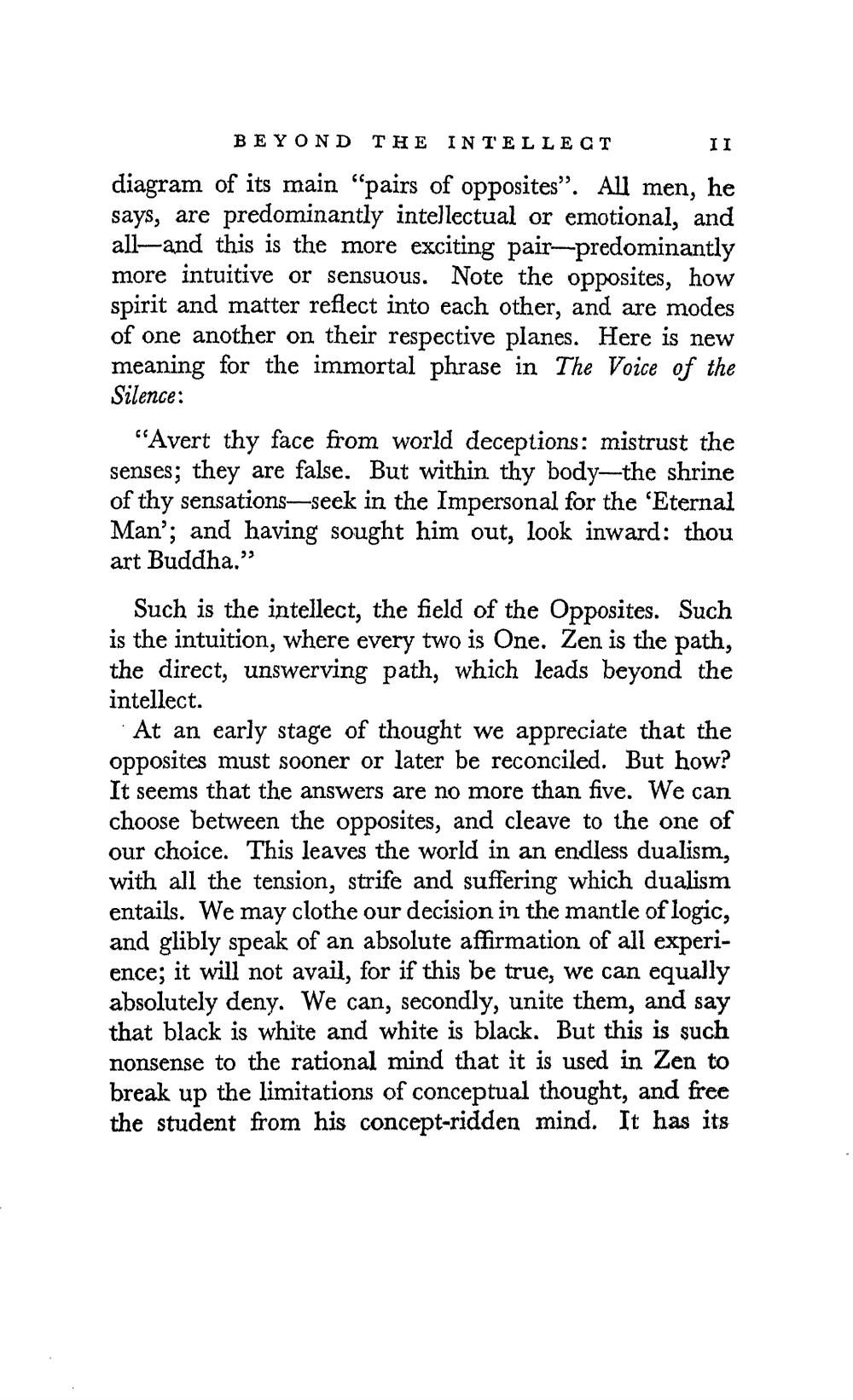________________
BEYOND THE INTELLECTII diagram of its main "pairs of opposites”. All men, he says, are predominantly intellectual or emotional, and all—and this is the more exciting pair--predominantly more intuitive or sensuous. Note the opposites, how spirit and matter reflect into each other, and are modes of one another on their respective planes. Here is new meaning for the immortal phrase in The Voice of the Silence:
“Avert thy face from world deceptions: mistrust the senses; they are false. But within thy body-the shrine of thy sensations-seek in the Impersonal for the 'Eternal Man'; and having sought him out, look inward: thou art Buddha."
Such is the intellect, the field of the Opposites. Such is the intuition, where every two is One. Zen is the path, the direct, unswerving path, which leads beyond the intellect.
At an early stage of thought we appreciate that the opposites must sooner or later be reconciled. But how? It seems that the answers are no more than five. We can choose between the opposites, and cleave to the one of our choice. This leaves the world in an endless dualism, with all the tension, strife and suffering which dualism entails. We may clothe our decision in the mantle of logic, and glibly speak of an absolute affirmation of all experience; it will not avail, for if this be true, we can equally absolutely deny. We can, secondly, unite them, and say that black is white and white is black. But this is such nonsense to the rational mind that it is used in Zen to break up the limitations of conceptual thought, and free the student from his concept-ridden mind. It has its




